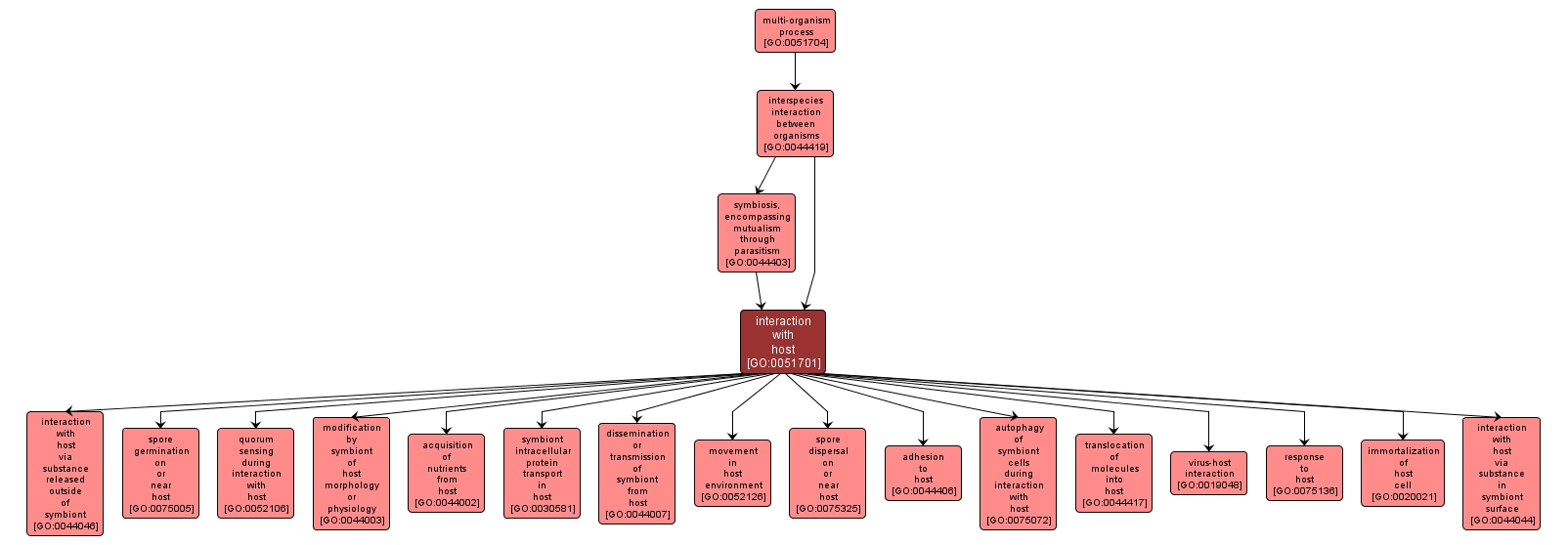GO TERM SUMMARY
|
| Name: |
interaction with host |
| Acc: |
GO:0051701 |
| Aspect: |
Biological Process |
| Desc: |
An interaction between two organisms living together in more or less intimate association. The term host is used for the larger (macro) of the two members of a symbiosis; the various forms of symbiosis include parasitism, commensalism and mutualism. |
|

|
INTERACTIVE GO GRAPH
|














